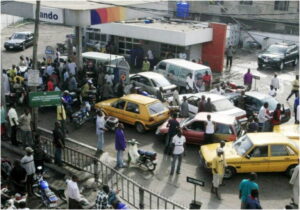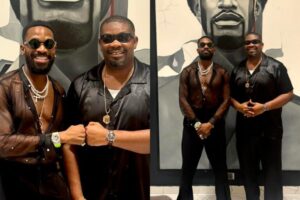Threat Of Deadly Rock Hitting Earth Persists
3 min read
In recent times, there have been claims and counter claims on the possibility of a giant asteroid or rather deadly space rock hitting Earth and causing mass extinction, even of human existence.
The United States National Aeronautic Space Agency (NASA), on Monday September 9, 2019, announced that an asteroid that posed some “concern” to Earth’s safety would scrape past the home planet on September 27.
The asteroid, dubbed by NASA 2006 QV89, was first found hurtling past Earth 13 years ago. Even back then, NASA confidently estimated the rock would visit Earth again in September 2019. But a lack of concrete observations meant there was some uncertainty over how close the asteroid would approach Earth. The uncertainty led NASA’s Centre for Near Earth Object Studies (CNEOS) to consider a small probability of impact this year.
On Monday, September 9, 2019, three asteroids hurtled past Earth. One passed as near as 310,000 miles (500,000 kilometres) — closer than any potential asteroid near-miss for the next three months.
Asteroid 2019 QZ3 flew by at 6:49 a.m. ET; asteroid 2019 RG2 followed at around 3:13 p.m. ET, and the third, asteroid 2019 QY4, flashed past at 9:10 p.m. ET, the International Business Times reported.
QZ3 is the biggest of the trio, with a diametre of 220 feet (67 metres), while RG2 and QY4, respectively measure approximately 66 feet (20 m) and 52 feet (16 m) in length, according to NASA’s Centre for Near-Earth Object Studies (CNEOS).
Space rocks such as these, known as near-Earth objects (NEOS), are nudged by the gravity of neighboring planets into orbital paths that carry them fairly close to our cosmic address. But “close” in space is a relative term: At the closest point in their passage, all three of today’s asteroid visitors will be farther from Earth than the moon is, according to CNEOS.
RG2 is the fastest asteroid, speeding by at a velocity of nearly 50,000 miles per hour (80,000 kilometers/hour), while QY4 is moving at just over 17,000 mph (27,000 km/h). QZ3 is the slowpoke of the group, at 16,700 mph (26,800 km/h), according to IBT. Though QZ3 is the biggest asteroid, it is also the furthest from Earth, at a distance of approximately 2.3 million miles from our planet, CNEOS reported.
Another asteroid — 2006 QV89 — was previously thought to potentially follow a trajectory that could slam into Earth, with a one-in-7,299 chance of an impact on September 9. But experts announced in July that the asteroid did not appear in the area of the sky where it would have shown up if it were on a collision course with our planet, representatives with the European Southern Observatory (ESO) said in a statement.
CNEOS representatives confirmed on August 15 that QV89 was no threat to Earth, and that the asteroid would instead rocket past our planet on September 27 “at a comfortable distance of 4.3 million miles (6.9 million km), about 18 times the distance of the Moon.”
Currently, there are 878 NEOs that demonstrate some risk — however small it might be — of colliding with Earth, according to a list maintained by the European Space Agency (ESA). Of these, the biggest (and second on the list) is asteroid 1979 XB. Measuring about 2,300 feet (700 m) in length and travelling at more than 58,000 mph (93,300 km/h), the massive space rock is expected to come calling on December 14, 2113, ESA reported.
According to NASA, Asteroid QV89 will appear close to Earth on the morning of Friday, September 27.
Also, Nigeria and rest of the world are set for another astronomical spectacle, as the Harvest Moon also called the Corn Moon will reach its peak in the early hours of Saturday, September 14.
The phenomenon, which has been associated with aberrant behaviour over the centuries, is expected to last for two weeks up to the September 28 new moon.
The September Full Moon is a fan-favourite among amateur stargazers and astronomers alike. The Full Moon marks the midway point of the monthly lunar cycle, which lasts an irregular 29.53





